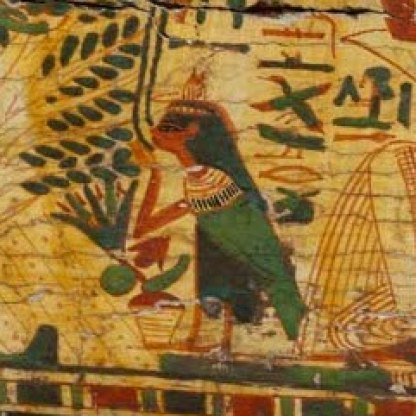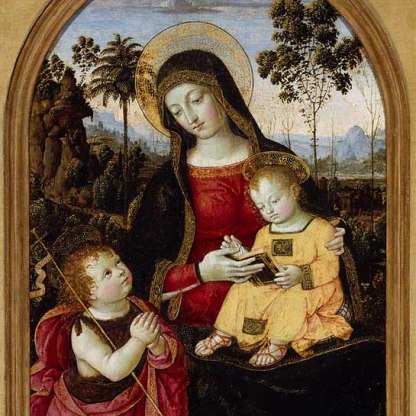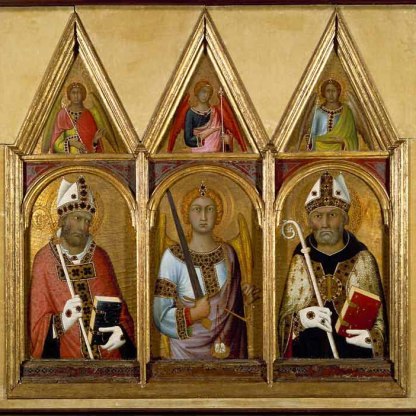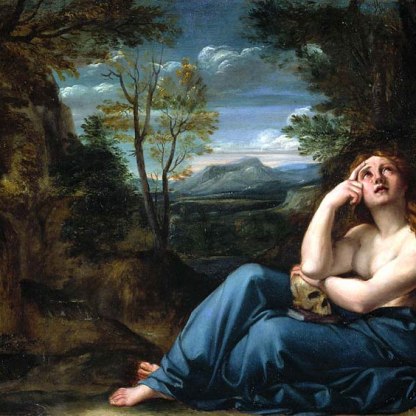Madonna and Child Enthroned, with Four Angels

This type of picture, in which the Virgin Mary is shown seated on a high triangular throne, surrounded by angels and backed by a richly embroidered fabric – called a 'cloth of honour' – is one that Luca di Tommè returned to throughout a long and successful career. Records suggest that he was one of the most important artists working in Siena in the second half of the fourteenth century. Yet he and his contemporaries tend to be overshadowed today by the great figures who came before them (Duccio, Simone Martini, the Lorenzetti brothers) and the giants of the early Florentine Renaissance who came after (Masaccio, Fra Filippo Lippi, Domenico Veneziano).
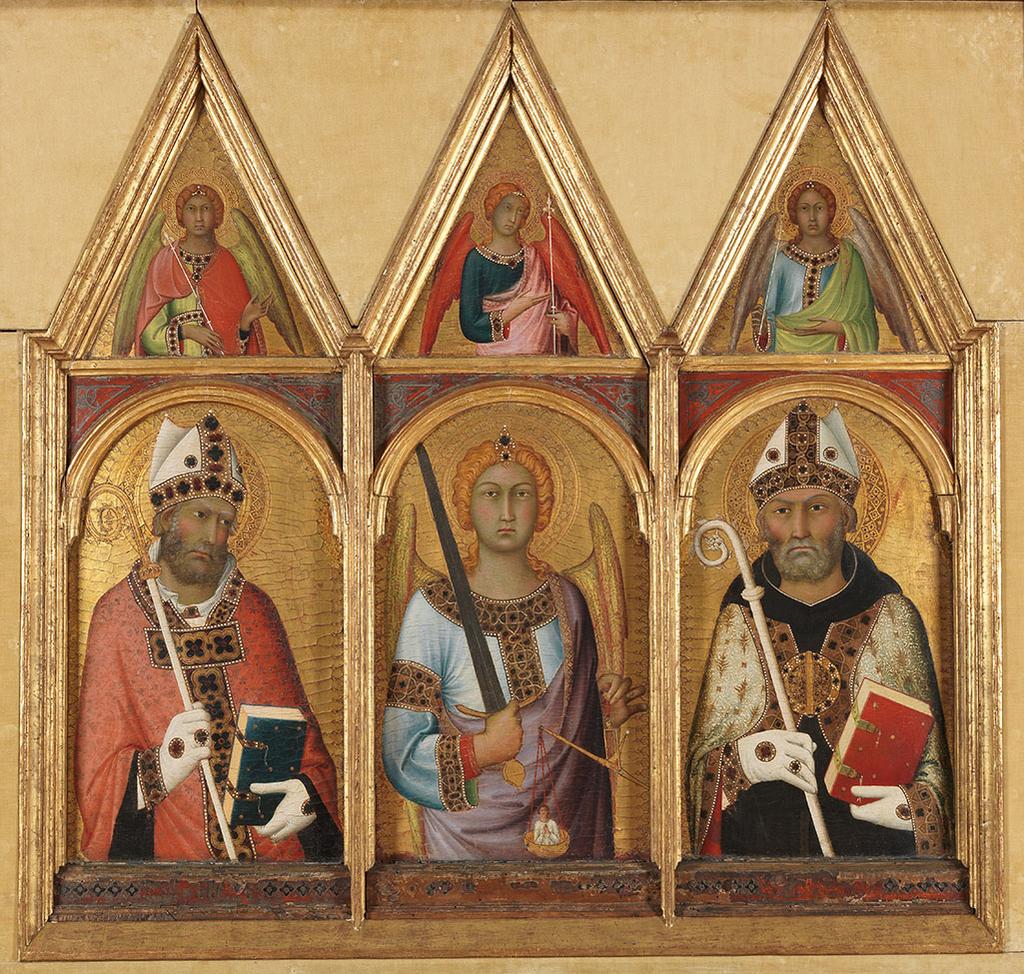
Tommè was strongly influenced by Simone Martini, whose panels from an altarpiece can be seen above (552). One feature that he clearly inherited is a fondness for decorative punched gold. Tommè makes liberal use of the technique in this panel. The hem of the Virgin’s cloak, her crown, the cushion she sits upon and, most obviously, the richly ornamented textile held up by the four angels – all are depicted in the minutest decorative detail. Mary's cloak, it should be noted, would once have been a bright blue – over time this has changed to the rather drab near-black you can see today.
But what really catches the eye in this tall, narrow altarpiece is the gaze of the two chief figures. The Christ Child here stares directly out at us, ignoring his mother, who tilts her head slightly towards him, her long fingers holding him protectively. He is seemingly forgetful of the goldfinch in his left hand who appears to be struggling to escape his grasp. Supporting himself upon Mary’s wrist, the child has stood up and takes a step towards the viewer. Round his neck he wears a band from which hangs a crucifix – prefiguring his own earthly death – and an amulet of red coral, which since pre-Christian times had been seen as a protection against the evil eye, particularly for children. There is a seventeenth-century example in the Fitzwilliam M.73-1930, that shows the archangel Michael vanquishing Satan.
In 1348 Italy suffered an outbreak of the Black Death which saw the population of Siena reduced from 42,000 to 15,000. The plague returned with marginally less devastating effects in 1363 and 1374, and Luca di Tommè lost his first wife in one of the epidemics. Most religious art from the thirteenth century on held out the hope of personal salvation. At a time when human life was so vulnerable, Luca’s divine child, with his amulets and his calm, protective mother, must have offered the faithful a particular comfort.
Themes and periods
Data from our collections database
Cavaliere Giuseppe Toscanelli, Pisa; his sale, Florence, 9-23 April 1883 (104), bt. Charles Butler
Acquisition and important dates
- Method of acquisition: Bought
- Dates: 1893
Dating
Maker(s)
- Luca di Tommè Painter
Materials used in production
Read more about this recordStories, Contexts and Themes
Other highlight objects you might like
Suggested Curating Cambridge products
Sign up to our emails
Be the first to hear about our news, exhibitions, events and more…
